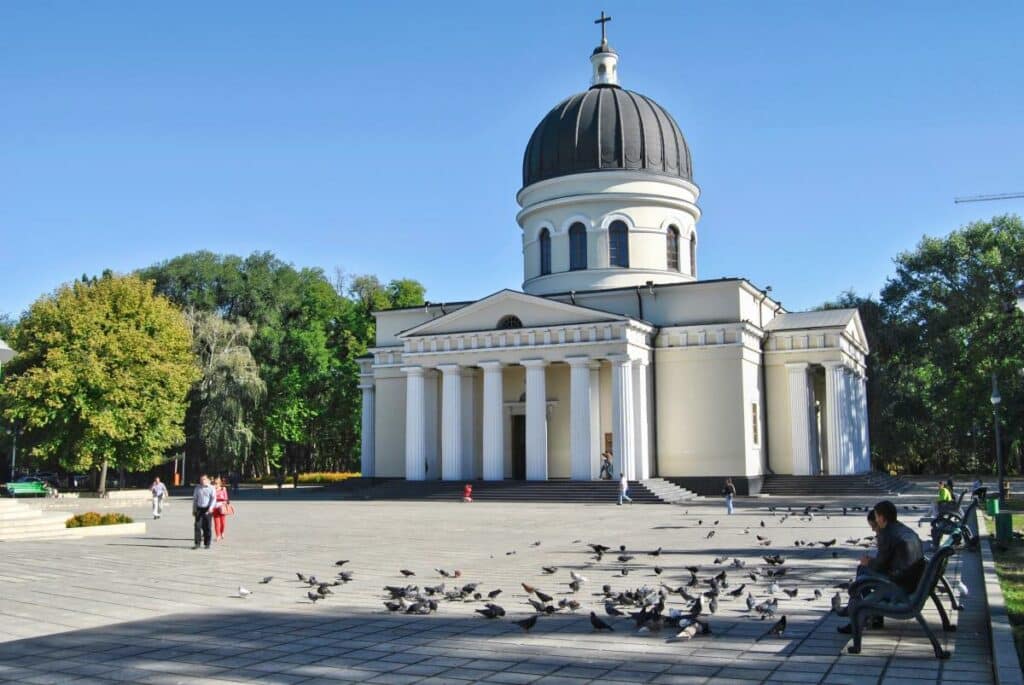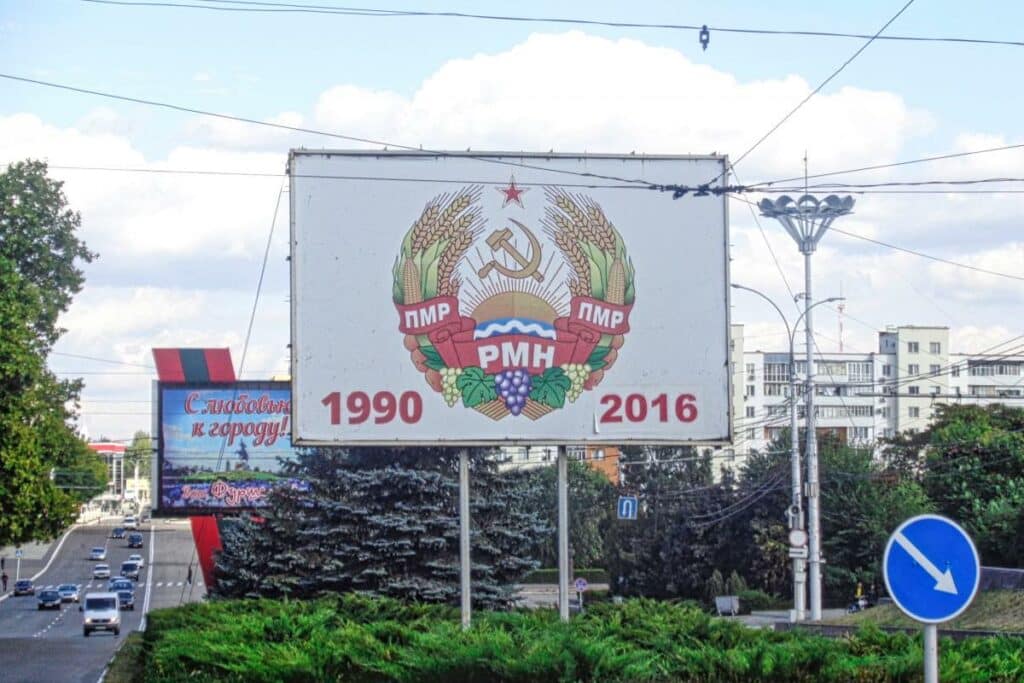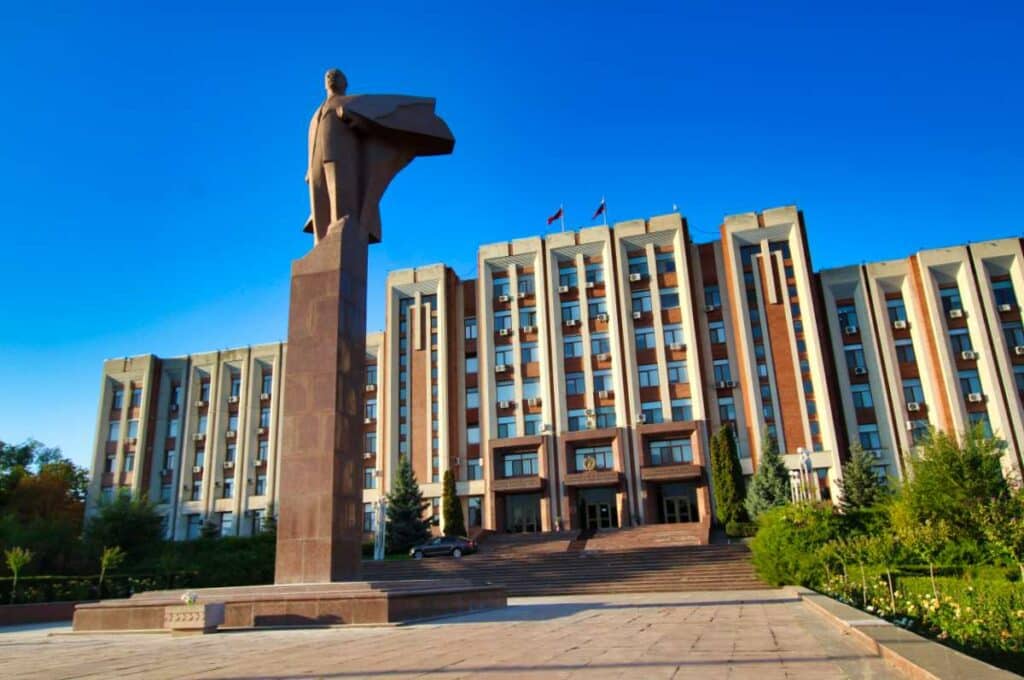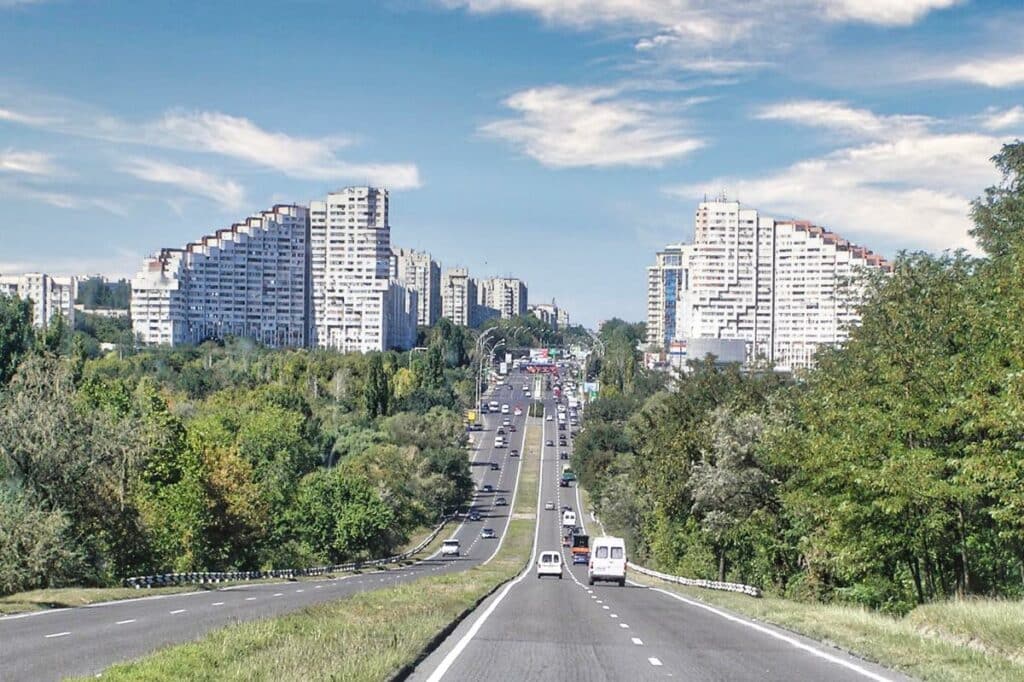No one knows what the country is actually called: Moldova or Moldavia? In its own name it is called Moldóva, in the west Moldavia is common, but ambiguous: The east of Romania also bears this name, taken from the river Moldova. The name alone seems to cause problems and confusion. Let us therefore untangle this tangle of Central European ignorance and temporal overlaps, as it becomes evident in one fell swoop in the context of the Russian war of aggression in Ukraine.
Moldova is considered the poorest country in Europe, and is even significantly poorer than Albania. It is just slightly larger than Maryland. However, the actual problems of this country are not reflected in the size figures. Rather, they lie in its history and its changing geostrategic importance. The country lies between Romania and Ukraine. Since an exchange of territory in 2001, it has had a port on the Danube, which is considered an international waterway, in the far south in the small town of Giurgiulești on a length of about 300 meters. This gave the landlocked country access to the world’s oceans via the Black Sea.

Moldova’s eventful past
Moldova has a very complicated past. The country never stepped out of the shadow of its powerful, dominant neighbors. It has always been the plaything of great empires. In the 13th century, Tatar-Mongolian khans held supreme sway, and later Poland-Lithuania set the tone. From 1512, the land between the Prut and Dniester rivers came under the influence of the Ottoman Empire, followed 300 years later by Tsarist Russia.
In the 20th century, things got really turbulent: the state assignments changed at short intervals. Twice the country belonged to Romania or to the Soviet Union – sometimes for a short time, sometimes for longer. What makes the whole thing even more complicated is that the external borders are marked out differently with each change of rule; there has never been continuity during this period. Stalin established today’s territorial layout after the Second World War.
Moldova was and still is in the overlapping area of the bordering powers. With the tsarist influence, the Russian language and the Cyrillic script spread from 1812, and the Romanians – they called the whole country between Prut and Dnister Bessarabia – promoted their language and the Latin script. The repeated short-term change lasted until the collapse of the Soviet Union in 1991. Today, both languages and scripts stand side by side on an equal footing.
Moldovan statehood, which has existed since 1991, has not been a time of domestic and social tranquillity. As early as 1991, entire markets collapsed overnight: Moldova and Georgia, for example, once supplied the entire Soviet Union with wine and cognac. Also, in the first years after independence, the question of an annexation to Romania was discussed intensively and controversially. The country almost threatened to break up over this – without this being noticed by the Central European public.

Transnistria: a frozen conflict
In parallel, developments escalated in Transnistria, the narrow strip of land on the other side of the Dniester river. In Soviet times, the centers of heavy and petrochemical industry were located here around Ribniţa, Tiraspol and Tigina (Bender), managed by the Russian-speaking elite. However, because the government in Chişinău was unwilling to address the concerns of Transdniestrian spokesmen, armed conflict ensued, which was settled only after the intervention of the Russian military. Since 1994, there has been a “frozen” conflict here: Transnistria is an internationally non-recognized country, secured by Russian troops.
Anyone visiting this country rubs their eyes at the widespread symbolism. State emblems with a hammer and sickle, a wreath of ears of corn, grapes, the Dniester River, a red star and a rising sun greet the few guests who come to the capital Tiraspol. The common abbreviation ПМР/PMR means Pridnestrovian Moldavian Republic or Pridnestrovie for short, which means the country located on the Dniester River, as Transnistria would like to be called.

Much of it seems like something out of a surreal movie: The unrecognized country makes itself look older than it is (1990!), it has its own currency and its own stamps, which, however, are only valid in Transnistria. At the same time, it has the same international license plate as Moldova (MD) and plays soccer together with Moldova. FK Sheriff Tiraspol regularly wins the title of national champion in Moldova.
Tiraspol made it into the European press in September 2021 with soccer, not human rights or international awards: Real Madrid conceded a 2-1 home defeat to the underdogs from Eastern Europe. The German newspaper Süddeutsche Zeitung commented:
“Sheriff Tiraspol’s victory at Real Madrid is not only one of the biggest Champions League sensations in years – but also the success of a project designed to serve the image of a shady regime. A completely unknown club by the name of FK Sheriff Tiraspol comes from the far east of Europe, qualifies for the Champions League as the serial champion of the Moldovan league, and wins 2-1 at Real Madrid on the second matchday. Rarely enough there are still such surprising events in the through-capitalized soccer world.”
The sporting sensation holds a mirror up to our faces: Hardly any Central Europeans know the country, and even self-proclaimed experts do not always have their own experience of the country.
Lessons Learned from Mistakes: Partially Autonomous Gagauzia
Gagauzia (pronounced Gaga-u-zia) is something else entirely. Here, spread over four settlement islands, lives a Russian- and Turkish-speaking ethnic group comprising a good 150,000 inhabitants. Its capital is in Comrat in southern Moldova. When the representatives of Gagauzia also threatened to break away from Moldova, Chişinău reacted more prudently after the experience with Transnistria and offered partial autonomy. Since 1995, this status has been secured by the constitution, but hostility and intimidation by Moldovan nationalist parties continue, and interethnic and state coexistence suffer as a result.
A look behind the scenes shows that the country’s problems are very complex. The majority, especially of the young inhabitants of Gagauzia, speak Russian, but for the most part they can move effortlessly back and forth between the Russian and Moldavian/Romanian languages. Turkish is spoken mainly by the elderly. However, all Gagauz, whether Russo-, Turko- or Romanian-speaking, are Orthodox Christians. Not to forget that there are also smaller minorities in Moldova: Ukrainians, Roma, Bulgarians, Poles, Jews and, until 1940, (Bessarabian) Germans.
But the linguistic differences are not the only ones. Politically, the Gagauz are considered close to Russia; in 2014, they called for rapprochement with Russia in a referendum – the nationalist Moldovans were furious. Unlike many other parts of Moldova, the Gagauz have not embraced EU rapprochement. With a gas price that depends on inclination, Russia is playing off the various groups here as well, destabilizing and fighting not only Ukraine, but has also long had its eye on fragmented Moldova, which depends on Transnistrian electricity and 100 percent on Russian natural gas.

What will Moldovas future look like?
The problems are huge, the poor, small country is highly vulnerable, and no one knows what lies ahead for the Moldovans. As in Poland, a huge stream of refugees from Ukraine’s war zones poured into this country in the spring and summer – it is less than 50 kilometers from Odesa in Ukraine to Palanca, the border town with Moldova. However, agrarian Moldova hardly has the means to help a large number of people. Help in the greatest need comes mainly from individuals and families who take Ukrainians into their apartments or houses.
For years, Moldova’s prospects have been unclear due to its complex ethnic, political and economic situation. Whether the metaphorically long road to the West, the short road to the East or the country’s own regional path will or can be chosen is more difficult to discern today than ever before. This much can be said, however: The example of Moldova shows abundantly clearly that spaces and states do not simply exist, but must be seen as the result of practices – of destabilization and intimidation as well as of promotion and support – in a historical and ideological context. Our perceptions of Moldova are also guided by narratives, guided by interests, and often enough, hidden. In recent decades, the small country has always been overshadowed by Central European perceptions.
Looking back, what remains constant is a polyethnic and multicultural profile with special features that are unique even in heterogeneous Southeastern Europe. The roots of the current problems are the repeatedly interrupted development of the state, the arbitrary shifting of national borders in the 20th century and the insufficient social reappraisal of past eras.

